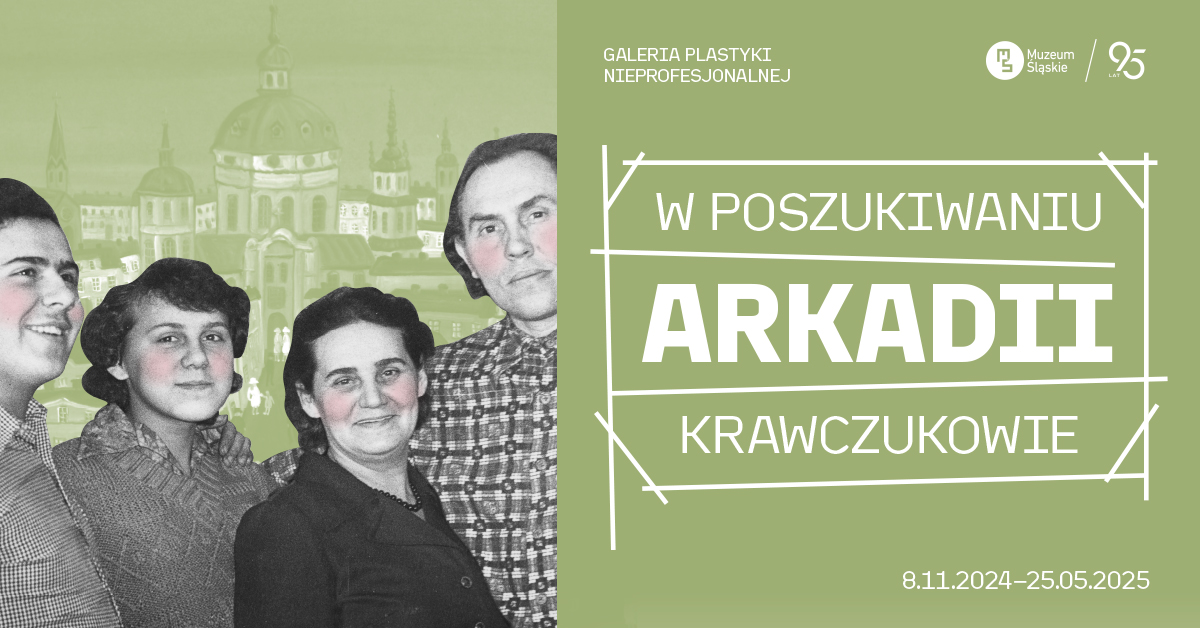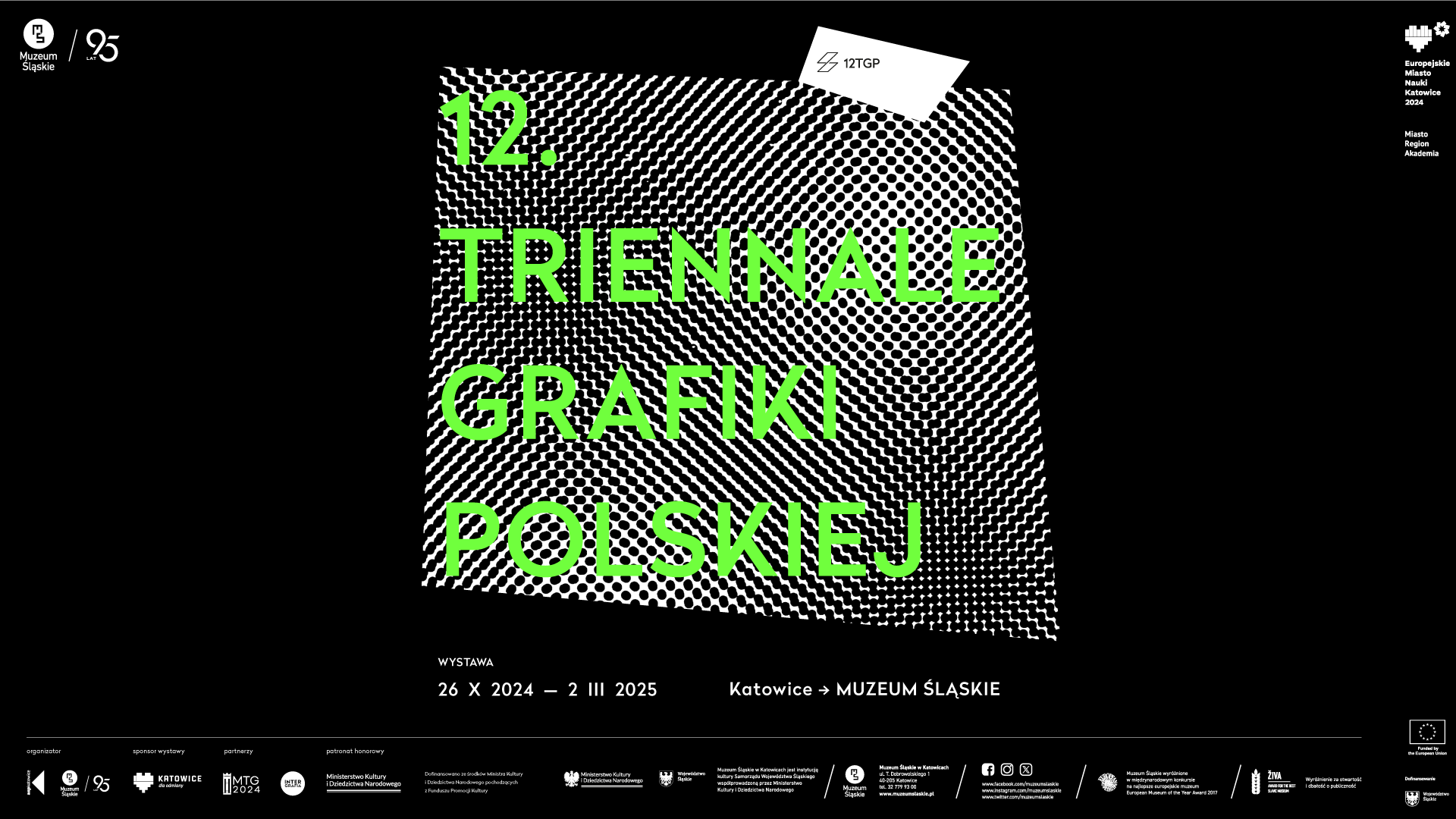Curator: Grzegorz Hańderek
The Polish Print Triennial is the oldest and the most prestigious overview of Polish contemporary graphic art, whose ambition is to select interesting artistic attitudes and tendencies within this discipline, as well as searches expanding its area.
Polish graphic art – undoubtedly a phenomenon on an international scale – has been gathering successive generations of artists and numerous enthusiasts for years, leaving new traces with each edition of the overview, being a derivative of the times from which it grows.
Graphic art results from the understanding of the material, the specifics of the process and the nature of the matrix. These factors affect both the imaging methods and the reception code. Today, it is the dynamics of material and digital discourse, referring to the changes of reality and materiality known to us, and the nature of experiencing them, forms both the reception and perception of our relationship with reality. Reading these changes is now the main field of its interest.
–––
The development of technology opens further dimensions of reality to us. The emergence of new methods of digital imaging – e.g. in the form of a simulation in augmented reality – opened a space that, on the one hand, removes the indispensability of the image screen, and on the other, it opens the possibilities of multi-sensory influence and interaction, expanding the scope of the concept of the matrix. This is particularly evident in the examples of responsive images, along with the entire interaction code, regulated by various types of input-outputs, changes in the dependency: observer – observed (often also by cameras, along with their quality and resolution) and multi-sensory experiences.
–––
The observation of matter is also visible at the level of trace identification – the “fundamental operational value” of the graphic experiment – especially when it is at the same time an echo of what was and what is to appear, or when being neither one nor the other, it remains some kind of context – a fragment of cultural sense. This fragment, which was originally a part, is raised to the role of visual representation, which is part of the ecosystem of cultural icons.
Such structure of sign representation, in turn, requires ordering, creating various types of private repositories and cabinets of curiosities, which are not only an expression of the aspiration to gather knowledge about the world, but a trace of searching for a universal order – often on its own and for its own use. In a sense, it is also a response to the cataloguing madness and permanent readiness to create documentation. But it does not stop there – sequences of calculations, repetitions, accumulation lead to searching for some general abstract principle, an algorithm that is useful for describing phenomena. Therefore, arranging the archive is both a goal and a method.
–––
Different attempts to reinterpret space are a very common issue – from very abstractly expressed “dimensions” of the space of perception and relation, through references to specific addresses and histories, to scientific geometry. However, the space in the graphics today makes us realise the importance of direct feeling. The influence of space and intimate contact with places are expressed here above all as something extrasensory. Something that we feel with our whole selves on the edge of a conscious experience. The space thus experienced transfers us – in a sensual, intellectual or spiritual way – to the sphere of memories and emotions. Imagining, experiencing, discovering, shaping space is one of the main fields of reflection.
–––
Digital reality has changed our attitude toward subjectivity, which means that the language of traditional graphics is no longer, because it cannot be, transparent. The new aesthetics connected with this – obviously – reflect in particular the process of visual and processual nature of graphics, which is more and more often gaining equal importance in relation to the subject of the work. The workshop of non-silver techniques indicates a specific interpretation trail – it is a conscious reference to a specific imaging code. After the dominance of digital images, manual work becomes a “new technology” – traditional, analogue, real and tangible – yet again.
By cultivating a traditional workshop, graphics is above all still a field of intimate contemplation of the world. It establishes the path of cognition on the basis of graphical experience with its nature of “limitation” both in relation to natural perceptual abilities as well as the postulated necessity of imposing boundaries on oneself – which today is particularly important in the context of mass inflation of images. Physical matter resists us, thanks to which it becomes the guarantor of our trust, provides support, foundation and a valorising point of reference for the excess of immediate visual.
In addition, graphic art – reaching for materials, techniques and skills that have been superseded by modern processes, and which determine its identity – brings to life the issue of the status of manual work in the context of the relationship between hand work and technological development, with many consequences – direct and metaphorical – resulting from this fact.
–––
The confusing dependence between images and reality also refers us to their morphology – exposing the dual nature of the image: its artificiality (imagery) and reality (the real object). It probes what, in the process of the gaze’s meeting with the object, is discovered for us, what is deformed, what remains completely obscured. Thus, today, graphic workshop is very often a laboratory for materialising reflection on images and the role they can/are to play.
–––
Images, being an inalienable mediator in our contact with reality, build our sensitivity and imagination. Technological base, which is the coupling of content, form and medium, plays a more and more crucial role in this process. The artistic competences of graphic art have – as it turns out – still a lot to offer in this respect thanks to their specificity regulated by the material, process and matrix. Moreover – these features mark it out to just that, to face the problems determined by the contemporary matters of reality.
–––
Above all, however, graphic art has an intimate, private aura, based on universal codes, that escapes attempts at simple language identification. The intangible nature of its traces is always below the surface and is based on the truth of individual experience.
Polish Print Triennial
Muzeum Śląskie, Katowice, ul. T. Dobrowolskiego 1
27.10.2018 – 24.02.2019
Pozostałe Archiwum wystaw

W poszukiwaniu Arkadii. Krawczukowie
8.11.2024-25.05.2025
przestrzeń wystaw czasowych na poziomie -2


